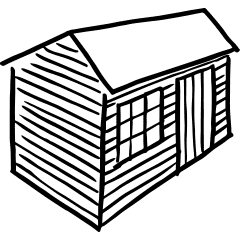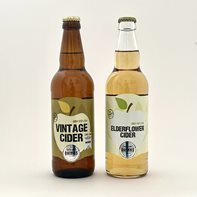

Smart's Double Gloucester
'Rich', 'mellow', 'powerful', 'earthy, almost smoky' are all terms that have been used to describe this cheese and you won't find anyone here to disagree. Cheese fact: the orangey colour of Double Gloucester is produced by the vegetable dye annatto. Cheeses like Westcombe Red and Shropshire Blue get their colour the same way.
In November 2007 Diana was shortlisted (one of four) for the Radio 4 Food and Farming Awards - the 'Best Producer' Award. A great accolade! And she also makes the less common Single Gloucester - we sell that too, of course.
Unpasteurised, vegetarian
Smart's
Diana Smart took up cheesemaking aged 61. It was just something she'd always wanted to do, so one day she bought a job lot of cheese-making equipment from two sisters whose family had been making cheese for generations, and got stuck in. In 2008 - two decades on - she's still stirring the vat and cutting the curd, with help from son Rod and assistant Gary, and is rightly celebrated for her wonderful Double Gloucester, one of a handful of makers who keep this cheese alive in its traditional form.
I visited Diana and Rod in March 2008 to pick up 45 (!) Double Gloucesters which we were sending to Twickenham Stadium. Old Ley Court is a few miles west of Gloucester, set in a natural bowl with great views to the hills around. I found them lovely welcoming people who offered me lunch (cheese, of course...) in the farmhouse before I went to see part of the process, as the curds were cut, turned, and squeezed to drain off the whey. The Victorian cheese presses and cheese maturing rooms were fascinating!


















